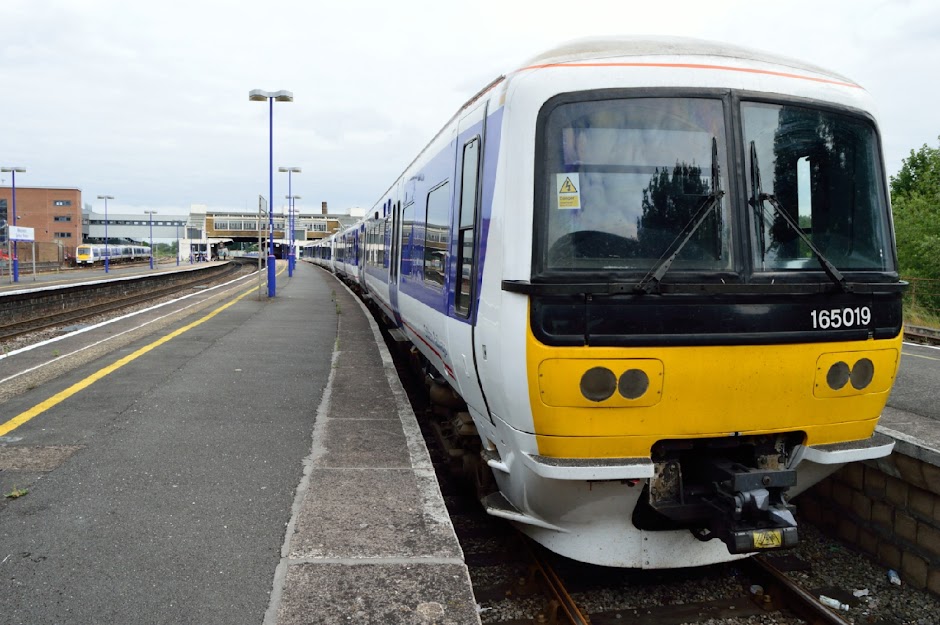 |
| Class 31 31288 on the sidings at Northampton Station Photo: Charles Moorhen Trainspotting Class 31 LocosThe Class 31 diesels, a one-time powerful workhorse of the British Rail network, became one of the railway enthusiasts favourite freight locomotives.As romantic and evocative as the steam locomotive was, with such impressive names as Mallard, the IronDuke and TheFlying Scotsman, like all good things it was inevitable that the golden age of steam would someday have to come to an end. And so it was that in the mid-1950’s the dawn of the diesel locomotive, such as the Class31, began to creep over the horizon. By 1967, the majority of steam locomotives had passed into history, (though fortunately a number were saved by heritage lines in England), superseded by a cleaner more efficient type of motive power – the diesel locomotive. Although there was a certain amount of initial animosity against these new and powerful machines by railway enthusiasts, one such diesel locomotive - the Class 31 - did eventually become a firm favourite among enthusiast and train-driving crews alike.
31306 at Bletchley - late 1980's Photo: Charles Moorhen
As
one of the classes of diesels known as the ‘Pilot SchemeLocomotives’, ordered by British Railways to replace their costly
and out-of-date steam locomotives, the Class 31 was
built by Brush Traction in Loughborough. With a top speed of 90 mph (though the majority never exceeded 75 mph) and weighing in at 49 tonnes, the first of the class made its appearance in public service in September 1957.
Incidentally,
the building of the full fleet took only five years to complete with
the final locomotive leaving the works in 1962.
Originally
intended to be used mainly on the Eastern Region, they were soon to
be seen frequently on the Western and London Midland regions and
eventually across the whole of the railway network performing freight
duties; although they also carried out relief passenger work. With a
fuel tank capacity of 750 gallons (2409 litres) of diesel, they were
ideal for a wide variety of duties.
Class 31467 locomotive Entering Bletchley station Photo: Charles Moorhen
The Class 31’s, which were later divided into sub-classes 31/0, 31/1 and 31/4, with a few classified as 31/5 and 31/6, were easily identified by the large head-code boxes on the roof above the cab. However, the first twenty examples of the fleet were not fitted with these boxes and were quickly nicknamed ‘Skinheads’ by enthusiasts. The sub-class, 31/4, was powerful enough to haul a train of up to eleven BR Mark 3 carriages though in practice the actual number of carriages hauled at any one time was often fewer than five.
Apart
from the day-to-day work that the Class 31’s carried out, four of
the fleet made brief appearances on television. 31233 and 31107 were used in a ‘crash’ scene for the BBC series ‘Top Gear’ on the 21st August 2006, to promote safety at level crossings.
31414
featured in an episode of ‘Casualty’, while 31108 was seen in an
episode of ‘EastEnders’ filmed on the Nene Valley Railway near Peterborough
–
once again involving a railway level crossing.
Class 31462 passing through Banbury in the late 1980's Photo: Charles Moorhen Like the steam locomotives that they superseded, the Class 31 fleet of diesel locomotives eventually became redundant with many ending up in pieces in scrap yards. However, around twenty-five or so survived this fate and were bought by heritage railway lines up and down the country. 31018, the first locomotive built, is now in preservation in BR Blue livery at the National Railway Museum in York, while the last locomotive to be built is preserved in BR Green livery. With a number of these sturdy locomotives still surviving...the
legend of the 31 lives on!
Class 31168 in a neglected state on Bletchley sidings in the late 1980's Photo: Charles Moorhen
Class 31 Diesel Locomotive Historical Note: Whilst
hauling a train in which Queen Elizabeth II was travelling on 4th
January 1961, D5667 (31240), broke down south of Cambridge. Don't forget to subscribe to 'Along These Tracks' railway blog to get all new posts and updates sent directly to you.
Blog update:
Previous photo posts are now easier to find. All blog posts are now listed alphabetically on the right side of your screen; under the heading, 'Previous Photo Posts'. "I hope this makes your search easier".
Return to HOMEPAGE
|
Translate 'Along These Tracks' Railway Photo Blog Posts For Your Chosen Language
'Along These Tracks' Railway Blog Posts
Saturday, 5 September 2015
Photos and Article Class 31 Diesel Loco British Rail Workhorse
Subscribe to:
Comments (Atom)
'Along These Tracks' Featured Post of Over 200 Images
Class 387115, 387123, 387124 Thameslink Trains Bedford 2015
Class 387115 Thameslink Trains EMU Bedford 2015 Photo: Charles Moorhen C lass 387123 Thameslink Trains EMU & Class 222023 D...

'Along These Tracks' Popular Photo Posts
-
Photos and True Mystery Story of Southern Railway Double-Decker EMU Train 8-Car Southern Railway Double Decker Electric Multiple Unit ...
-
Southern Railway Tavern Coach, Waterloo Station Tavern Coach at Waterloo With Exterior 'Brickwork' A bar serving alcohol on ...
-
London Midland Trains Class 350250 EMU Photo: Charles Moorhen Strangely enough, this 2016 nigh t photo of London Midland Trains ...
-
'Merchant Navy' 35006 Steam Locomotive Nameplate Unveiled Pete Waterman Unveils Merchant Navy Loco Nameplate Pop! ...
-
Southern Railway West Country Class Steam Locomotive 34016 'Bodmin' at Alton Photo: Charles Moorhen Battle of Britain ...









